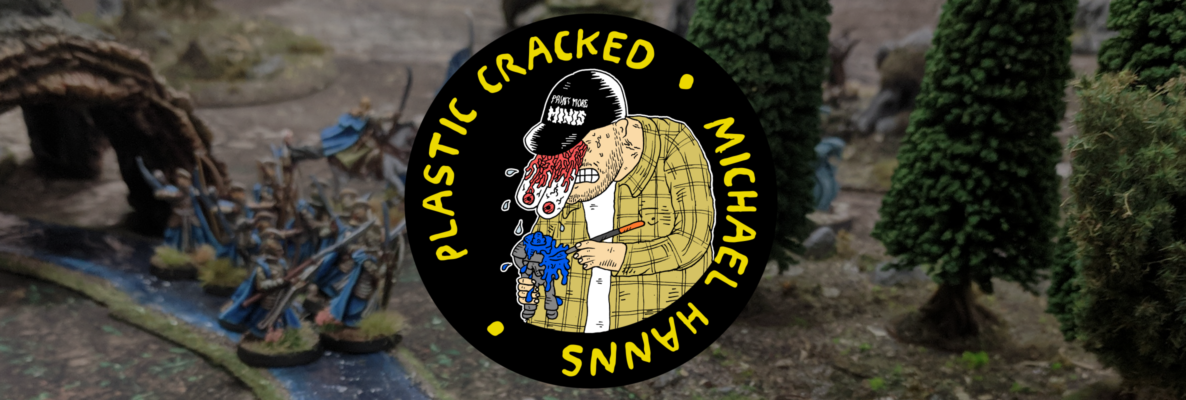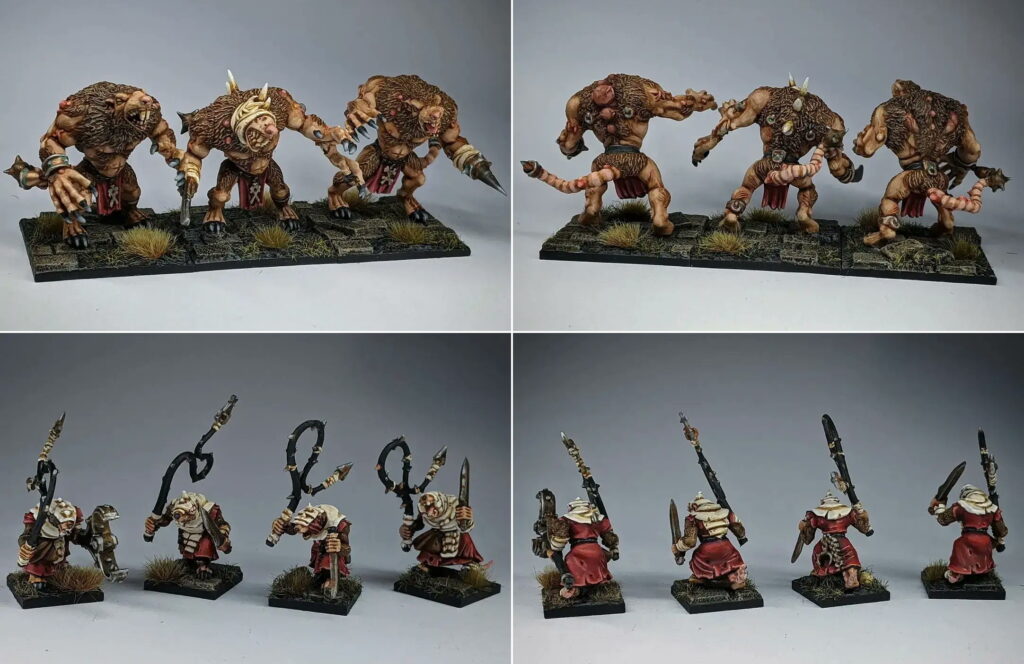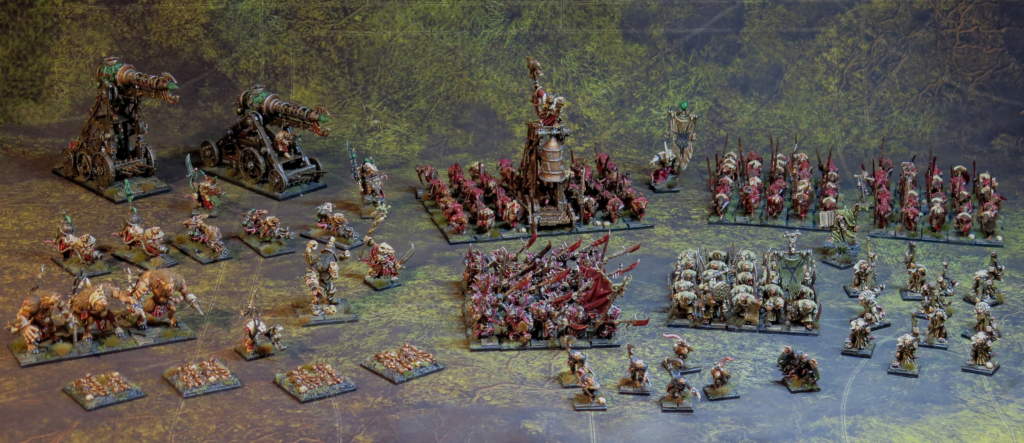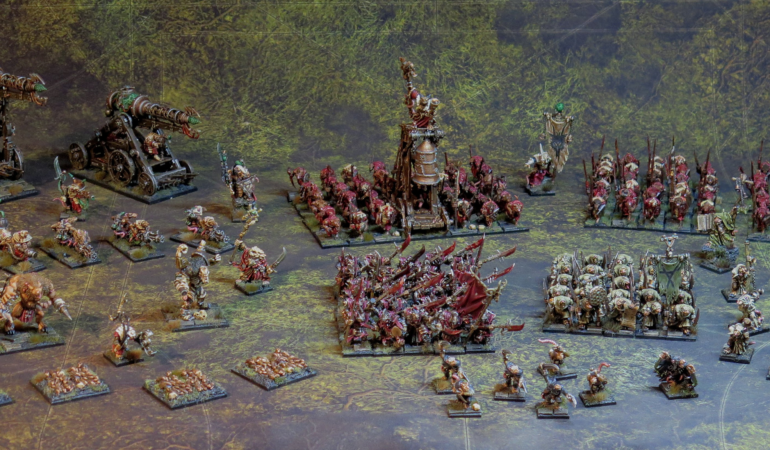
Greetings, manthings and welcome to a brand new series of posts on a project that has arguably been in the works for several years now. In this opening entry to the series, I’m going to showcase my ‘new’ 3000pts+ Skaven army for Warhammer Fantasy Battles 6th Edition while doing my best to explain why this project came about, why I chose 6th Edition as my game system of choice and how I plan to build and develop the army from here.
To start at the beginning, we need to go several years back to mid 2017. Those were simpler times; I had a couple of different irons in the fire – a 40K army, and my first Heresy project just starting to get off the ground – but back then my focus was mainly on Age of Sigmar. I was attending every tournament I could and getting a good number of games under my belt. After many events with my Maggotkin, I finally decided that it was time to try something new. I wanted to return to my first love from Warhammer Fantasy – Skaven.
I had only played Skaven for a very brief period during in my time with Warhammer Fantasy. Much like my Space Wolves were for 40K, Skaven were my first army in a brand new system – and chosen entirely for aesthetics over playstyle or practicality. I fell in love with the 6th Edition army book, it’s grim depictions of the rat men, dangerous and temperamental magic, the clans and their weird and wacky warmachines. Unfortunately, I just never really found my groove with them on the tabletop. I took way too long figuring out how to set up my units1 and no time at all to lose each and every one of my games with them. Back at the painting desk, I found them too tedious and too numerous to paint and before long they were punted for another army2. Still, as my first army – and by some stretch my favourite race from a lore/art point of view – they always held a very special place in my heart. Over a decade later, now an Age of Sigmar player, I would finally do the Skaven army that I’d always wanted.
Except it wasn’t the army that I’d always wanted. Nothing about the experience felt right to me. I hated how the Clanrats and Stormvermin looked on round bases. I hated the disconnect between the Clans at the time – Pestillens felt like an army unto itself instead of a part of a greater whole. I hated the muddying of waters between Skryre and Moulder with models like Stormfiends, and the diminished role of Clan Eshin in a game where skirmishing was no longer a special ability. But most of all, I hated the role of Skaven in the Mortal Realms; part of the appeal of Skaven is the existential threat they posed to the Old World, to the extent at which the Empire outright denied their existence. In the weird and wacky no-holds-barred universe of Age of Sigmar with underwater Elves riding giant war turtles and steampunk Dwarfs in airship tanks, the unstable machinery of Clan Skryre no longer felt dangerous or outlandish. The genetic experiments from Clan Moulder felt run of the mill. Without square regiments, Night Runners were pretty much just Clanrats without shields. Heck, half the armies in the game had units that rivalled the size of a block of Clanrats. Nothing about the army felt that special or exciting, and I just sort of lost interest.
Before I lost interest however, I managed to get a lot of the most tedious elements of the army out of the way. This includes 100 Clanrats, 20 Stormvermin, several Weapon Teams, a Warp Lightning Cannon and a small assortment of Heroes. I had hoped that getting through the bulk of the basic Troops first would leave the most interesting bits and pieces for painting, facilitating my long term motivation for the project. Instead, I was just left with a huge pile of painted minis for an army I had no interest in going any further with. Although I wasn’t especially happy with how they looked, they represented way too many hours of work to just sell off, so instead I put them into storage. There they lay in wait, dormant and largely forgotten. A blip, a rare mistake of a project that never quite came to fruition.
All of that changed a couple months ago.
I’d spent the previous couple of months polishing off a number of a number of outstanding projects – rounding out my Malifaux crew, filling out my Iron Warriors and adding yet more units to my Adepta Sororitas. My backlog was a far cry from ‘clear’, but I was feeling pretty good about the state of things. I finally felt ready to start something new. The only question – what?

I have to say, overall, I was very impressed. You will still need to do a little highlighting work afterwards if you want your miniatures to pop, but I will say that – for the right aesthetic – this is a viable alternative to washing then layering. After reducing with mineral spirits, Streaking Grime is much less obnoxious with how it ‘stains’ the surface of your miniatures than an acrylic wash, and if you go too heavy you can keep on ‘reducing’ the effect of it with more mineral spirits. I will 100% be giving this product another go in the future, particularly on Blanchitsu projects where that oil/enamel wash effect is particularly desirable.
Inspiration eventually struck while I was looking at my display cabinets, and one thing that really stood out to me was the sad little shelf of Skaven at the bottom of my AoS cabinet. They made for a pretty sorry display. I wasn’t happy with the bland basing scheme that I chose for the army, there wasn’t much model variation and – perhaps worst of all – I just really hated how they looked on rounds. A bit like the old Chaos Warrior models3, the Clanrats in particular are terrific looking designs but it’s plain as day that they’re posed for regiments. I thought to myself – to hell with it, I’m finally going to do something about this. I’m going to move my Skaven army back to squares.
I should mention that at the time that I decided to embark on this insanity, Games Workshop hadn’t really addressed or confirmed yet that The Old World was definitely going to be a reboot of Warhammer Fantasy like they have now. My plan here wasn’t to prepare for the Old World – there’s just too much uncertainty there still. Who knows what the timescale for that game is, what factions will be supported initially, what it’s timeline for growth looks like or even what kind of miniature count we’re looking at. Instead, my plan from the outset was to rebuild my army with Warhammer Fantasy 6th Edition in mind.
So, why WHFB 6th Edition? Why build an army for an outdated edition of a discontinued game over one of the bigger systems carrying the torch for Warhammer Fantasy (such as 9th Age or Kings of War)? Why not 8th Edition, at least? Well, hear me out here.
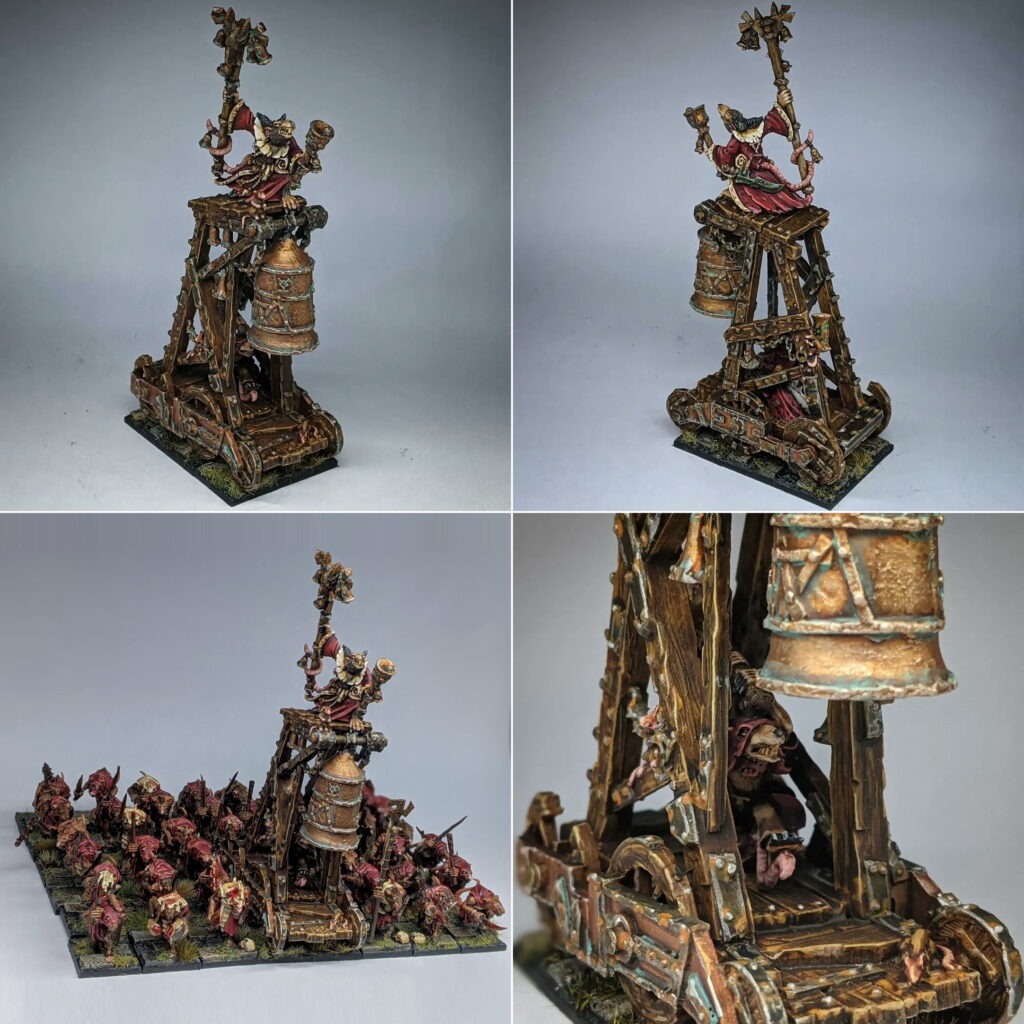
I painted this miniature in four subassemblies – the base, the Screaming Bell, the Grey Seer and the rat with the big mallet. Pretty much all of these were a joy to paint, with the exception of the bell structure itself. This was awkward in every which way imaginable. There were a ton of little metal plates and details to get at and paint on the inside of the structure and the bell had to be swinging loose until I had painted behind it. Being a metal mini with hard edges, it pretty much chipped if you looked at it the wrong way until it was cured and sealed. Finally, the metal mini lacked the definition in the wood grain of the plastic Skaven kits, leading me to have to hand paint on the grain myself. It probably took about 20 passes of freehanding grain and washing over it because it was looking sufficiently textured enough.
Still, it’s a brilliant miniature to behold. I can’t believe how well this holds up in a big unit of the new style of Clanrats.
The past couple of years have had some interesting ramifications for my hobby. Thanks to COVID, I’ve played less games than ever, but I’ve had every reason to continue painting miniatures at the same rate I always have. What else was I going to do? In that time, I’ve painted a 40K army, three Middle-earth armies4, two skirmish forces, a ton of terrain and a sizeable update to an existing army. I already have more armies than I could possibly have time to play with; I routinely find myself having to replace rulebooks and reference cards after only a game or two. I now find myself ahead of the curve, with time to paint an army purely for my own satisfaction5. I wanted to use this time to make myself the Skaven army that I’ve always wanted, an army I would be proud to own, display and – very occasionally – game with. This time, it didn’t have to be practical.
While games like Kings of War and 9th Age have a ‘Ratmen’ equivalent race, neither quite capture the spirit of essence of the Skaven that I have so much love and nostalgia for. Meanwhile, while Warhammer 8th Edition does have a few additions over 6th that I’d love to add to my army (Verminlords, for one example), the sheer volume of Clanrats and Clanrat Slaves that this edition demands is, frankly, massively off-putting. While it’s probably unrealistic to expect that my days of painting Clanrats are entirely behind me, that doesn’t mean I want to sign myself up to paint another hundred of the little furry gits any time soon.
6th Edition, on the other hand, fits the bill perfectly. The vast majority of Skaven units as we know them today are present in this book and – although Skaven are still by all accounts a horde army – I can quite easily get away with fielding three blocks of 30-40 Clanrats in a 2000 point game. This is appealing to me, as it allows me to focus my efforts on a diverse array of far more interesting support units instead of painting the same minis over and over again. Furthermore, as the 7th and 8th Edition rulesets were largely built upon the foundation that 6th established, very little is wasted effort should I eventually wish to pivot this army project to a later edition – a functional 6th Edition army is, at worst, a very sub-optimal army for 8th Edition. I can always expand upon the army later if at some point the idea of painting another 100 Clanrat Slaves doesn’t make me want to blow my brains out.
Now, there’s a list of reasons a mile long as to why 6th Edition Warhammer Fantasy is so appealing to me, but why even bother collecting to any game system in particular in the first place? I said myself earlier that part of the reason I’m even doing this project is that I had a bit of time to paint an army that wasn’t necessarily for gaming; something uncompromising, that looked and ‘felt’ every bit like the Skaven army I’d always wanted. Heck, while there is something of a scene for 6th Edition WHFB, it’s not like I’m going to be able to get a game in every other weekend. Why impose any structure or limitations on myself at all? Well, the truth is, I’ve always had a hard time focussing on painting projects purely for display. It took me a good year to build up the motivation to start my Barrels out of Bond diorama. There’s just something about pouring over a Codex or an Army Book with a calculator and a notepad and planning out an army that really feeds enthusiasm back into the other aspects of the hobby. Being able to aim for specific points of an armies growth such as 1000 points, 1500 points, 2000 points and so on has always really helped to keep me painting night after night.
So.. did it help? Well, you tell me!
Here I am at the end of the first leg of my journey with Skaven. Over the course of a couple of months, I managed to rebase back onto squares:
- 100 Clanrats
- 20 Stormvermin
- 8 Weapon Teams
- 3 characters
- Warp Lightning Cannon
And on top of that, I added the following models/units to the army:
- 6 Stormvermin
- 4 Rat Swarms
- 25 Plague Monks
- 6 Gutter Runners
- 10 Plague Censer Bearers
- 3 Rat Ogre and Packmasters
- Another Warp Lightning Cannon
- Boneripper
- 3 new characters
- A 6th Edition Screaming Bell
That’s a lot of new rats! It’s taken a couple months to get through all of that6, but this army is looking way more like the Skaven army I had in mind back in 2017. The miniatures are a bit of a mix of old and new – a balancing act of whatever I thought looked best and whatever I could get my hands on – and can build legal armies for 6th Edition WHFB of over 3000 points. I’m absolutely thrilled with how this project has turned out after so many of these miniatures had been languishing in boxes for years, so much so that the army was promoted to primo spot near the top of my display cabinet. That’s a massive improvement over the sad collection of poorly based Clanrats making a token representation in the bottom corner of my cabinets.
Of course, any of you who are paying attention will have noticed that this article was titled ‘Vermintide, Part One‘ – this is not the last you’ll be hearing of my Skaven army. There are plenty of great 6th Ed Skaven units that I’ve yet to add to this army – including but not limited to Warplock Jezzails, Giant Rats and Master Moulders – to say nothing of many models from 7th/8th Edition that I’d love to paint (Verminlord, anyone?). Heck, let’s be real – with so much of the groundwork on this army now laid, it’s not infeasible that I might look into what I need to make the army work for Kings of War or 9th Age somewhere down the line. It might not have been the priority with this army, but it would be nice to take this army to an event sometime, after all.
In the meantime, I’m going to leave you with a gallery of close-ups from the army that I haven’t been able to feature elsewhere in this article – I hope you enjoy!

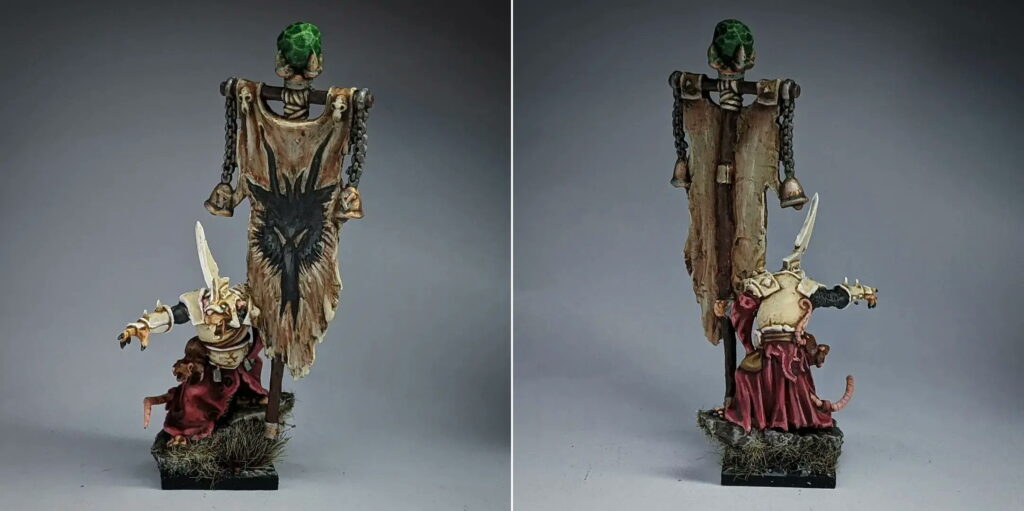
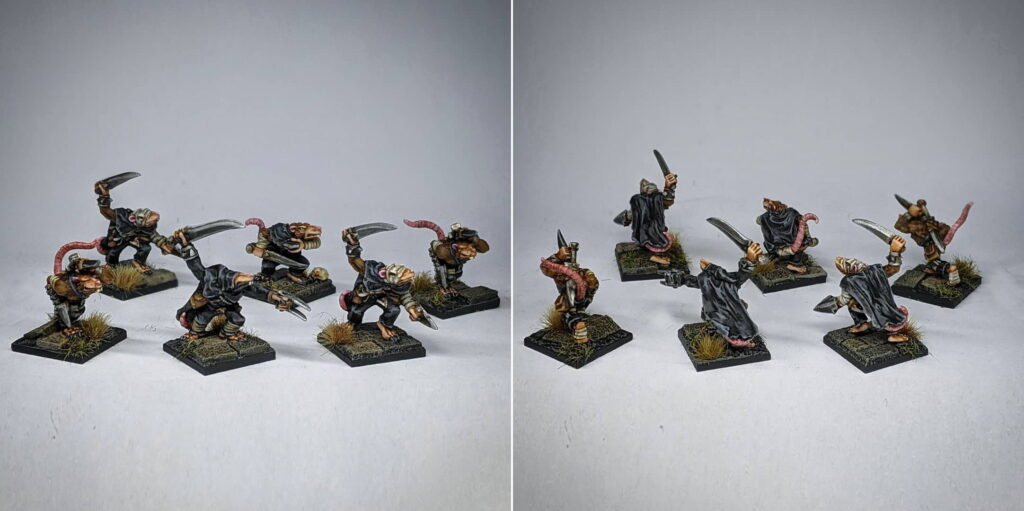
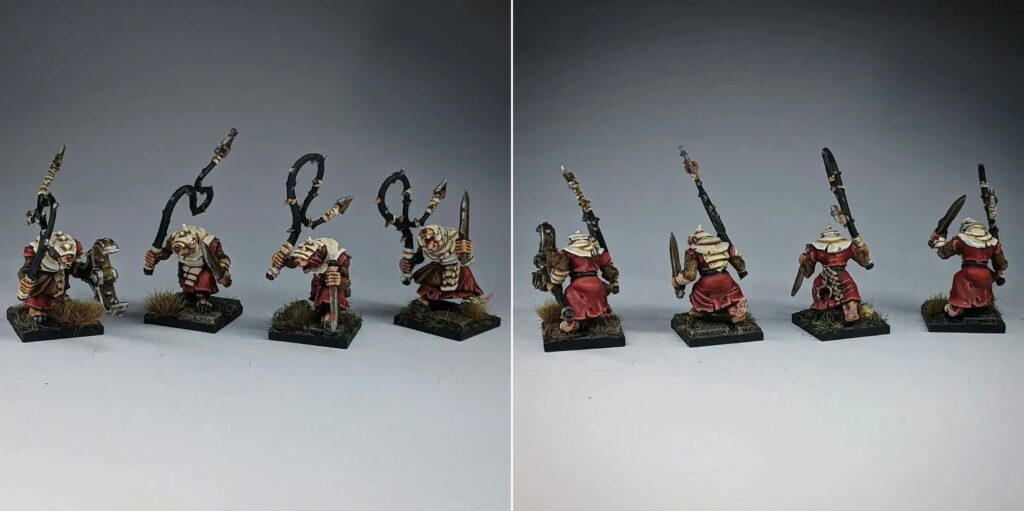
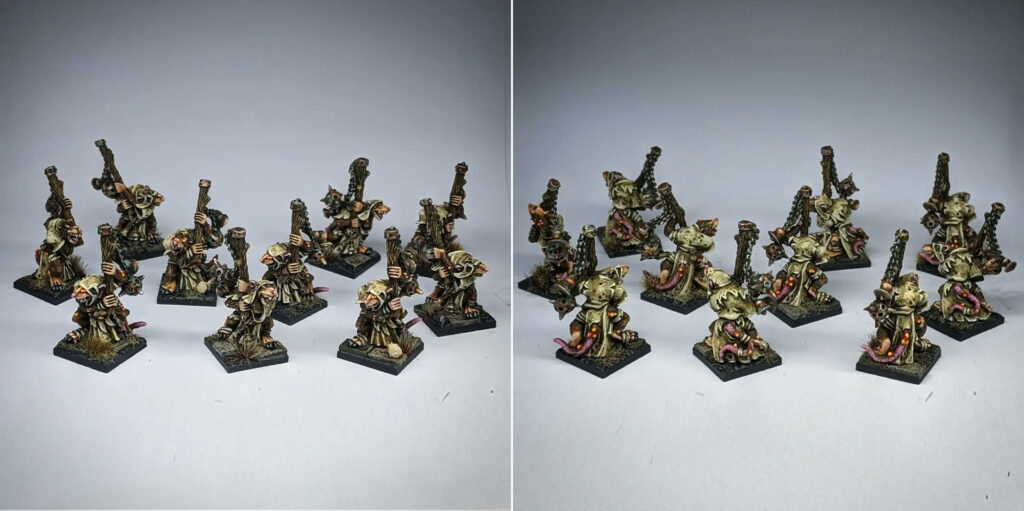
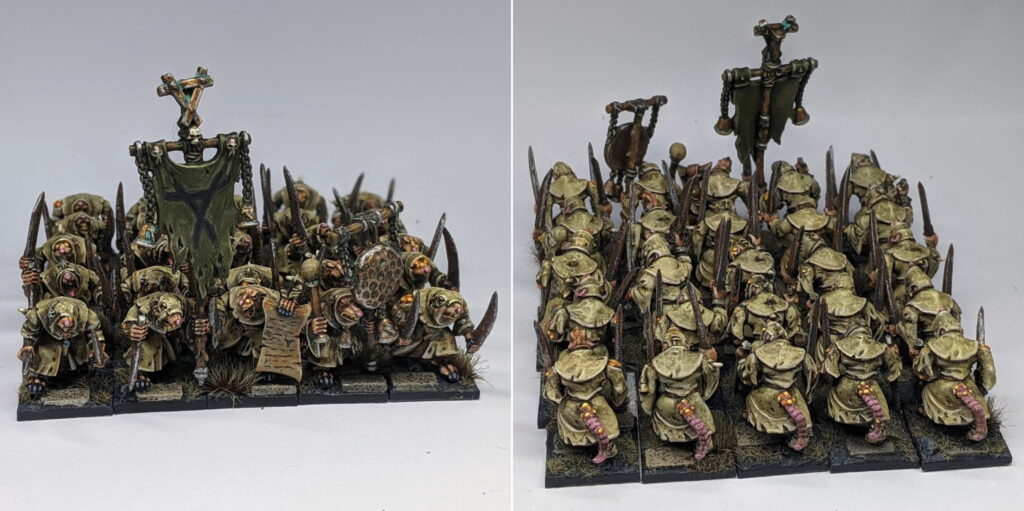
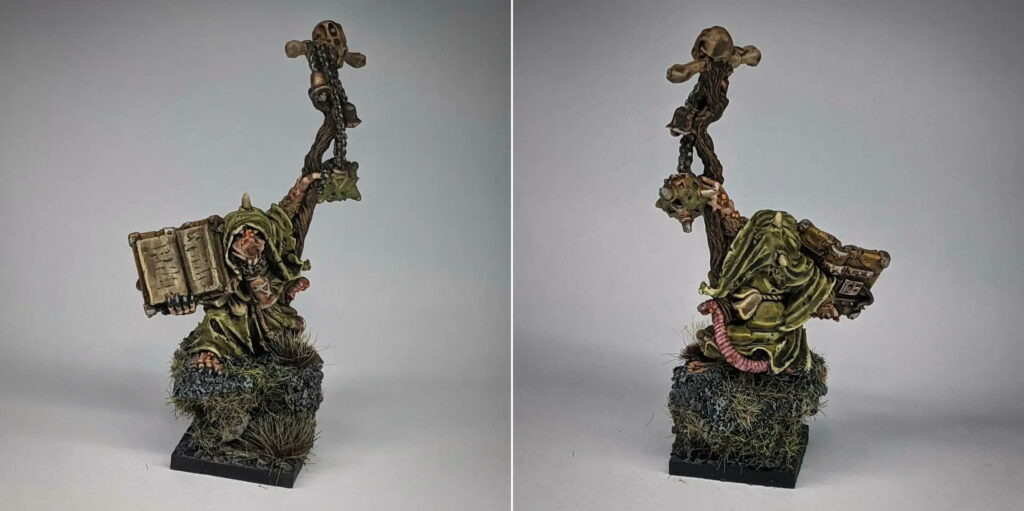
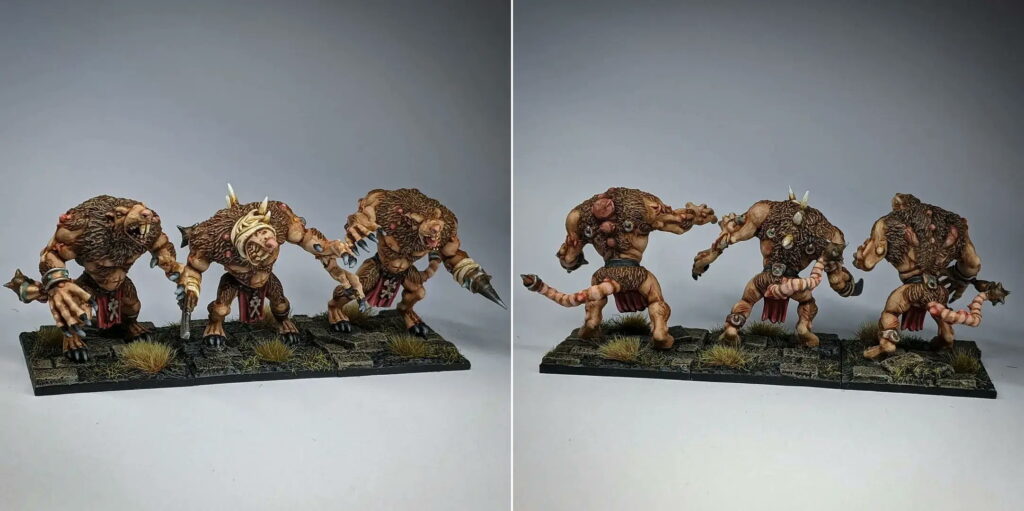
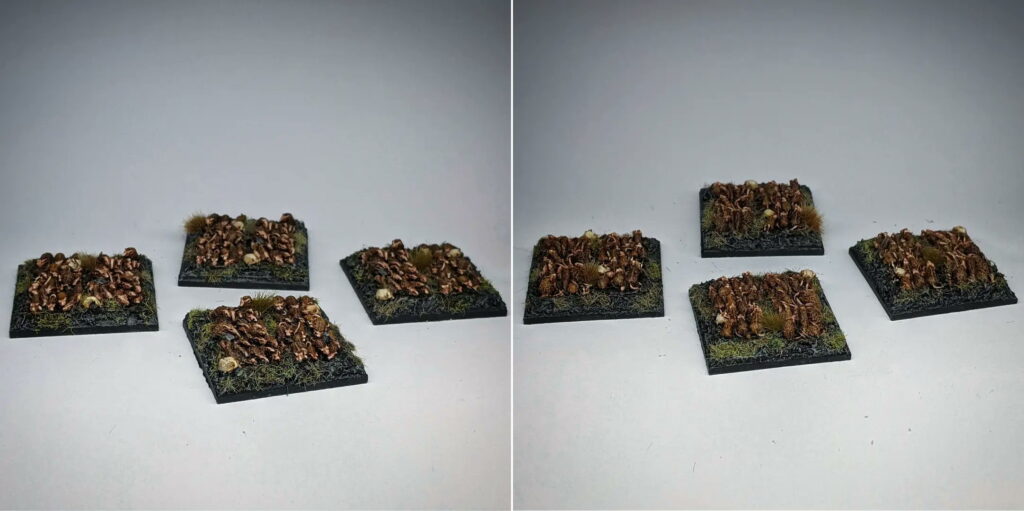
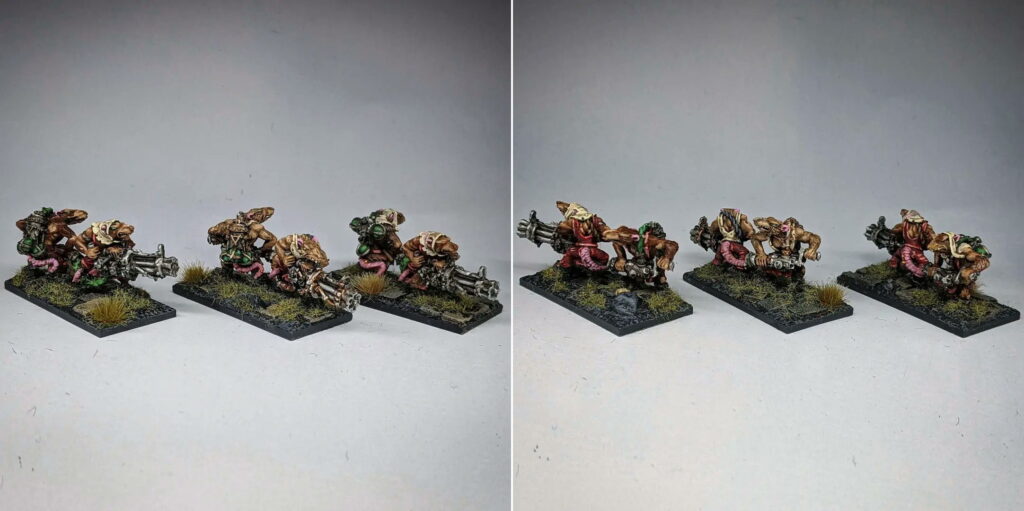

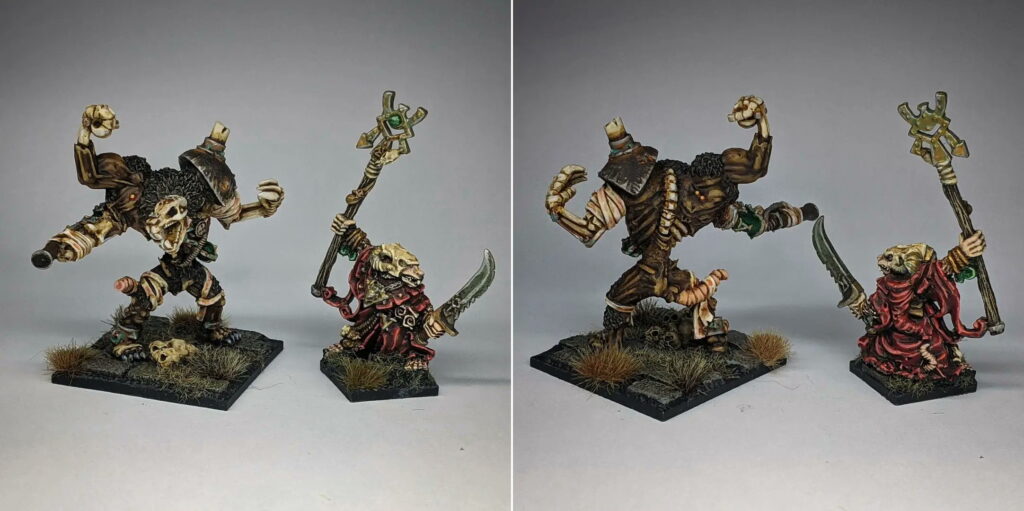
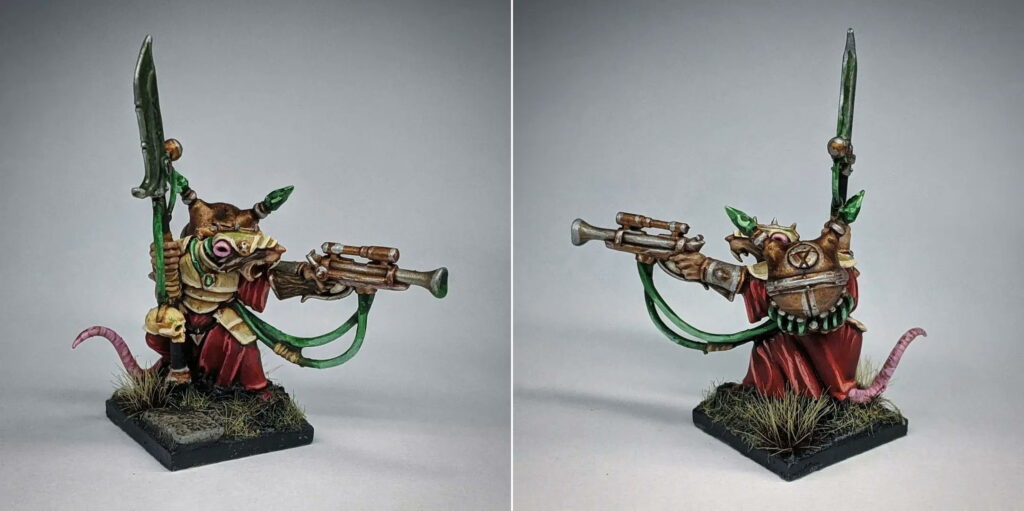
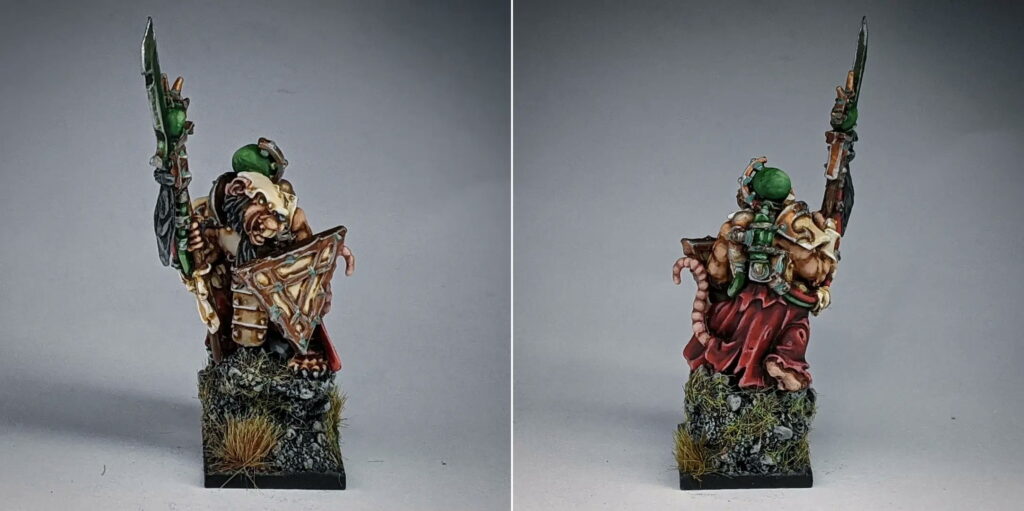

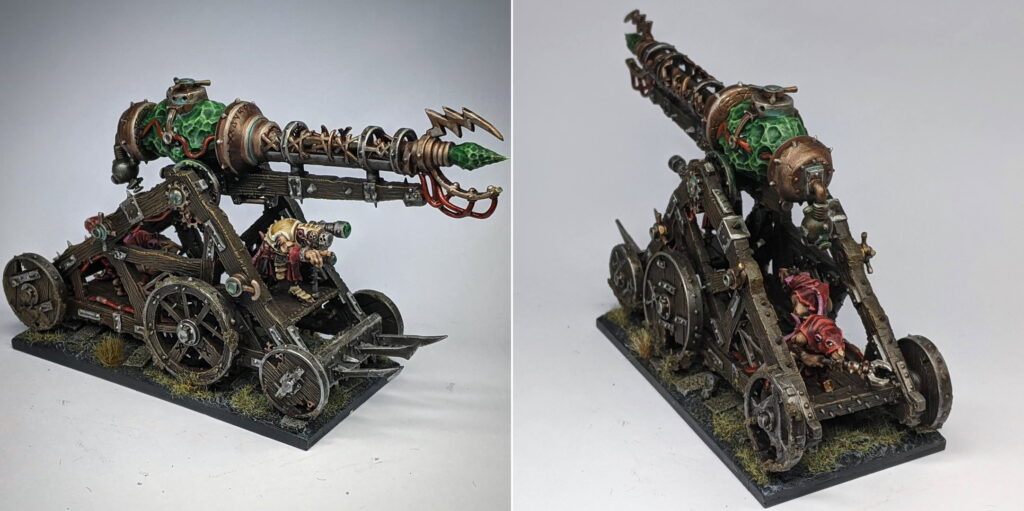
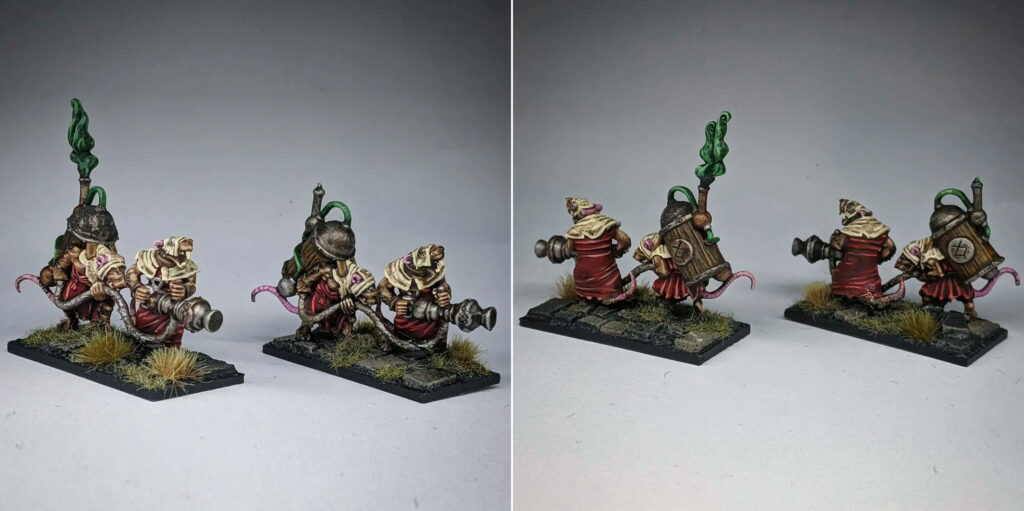
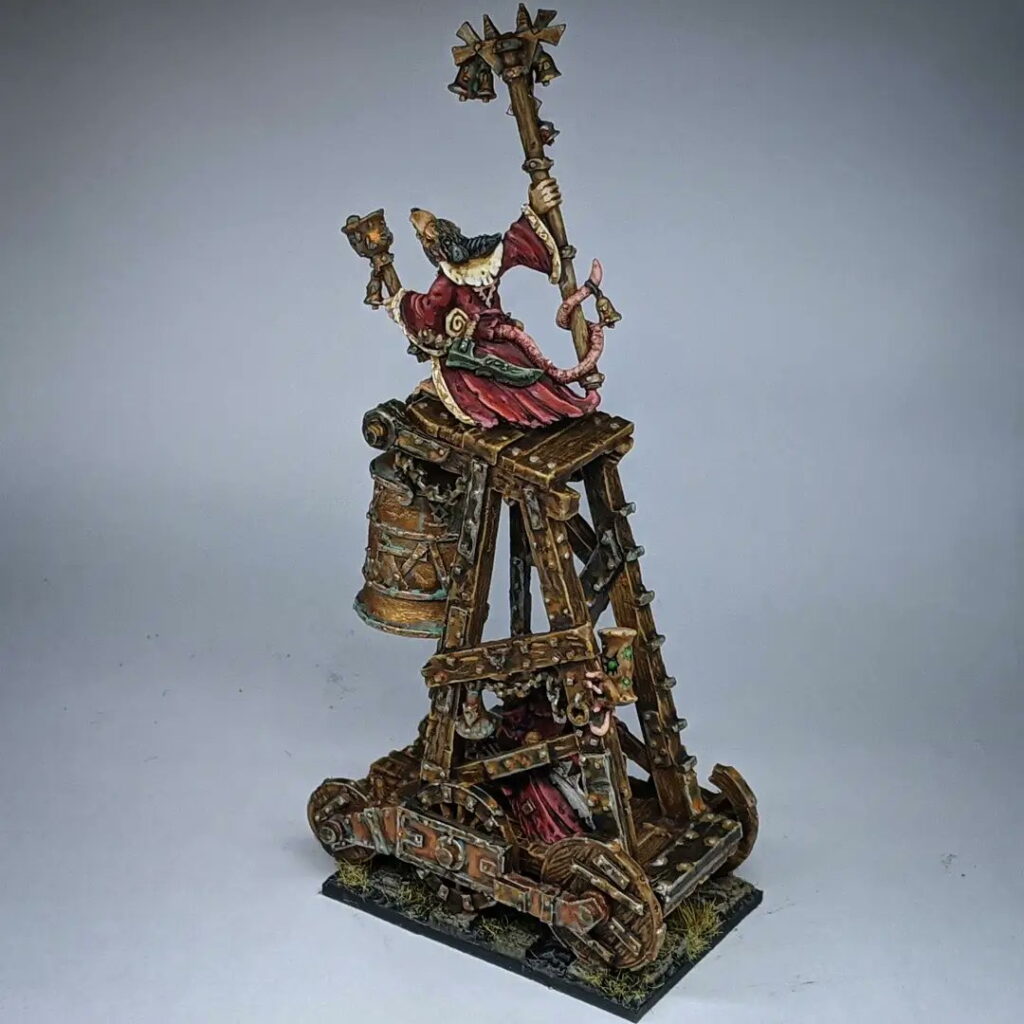
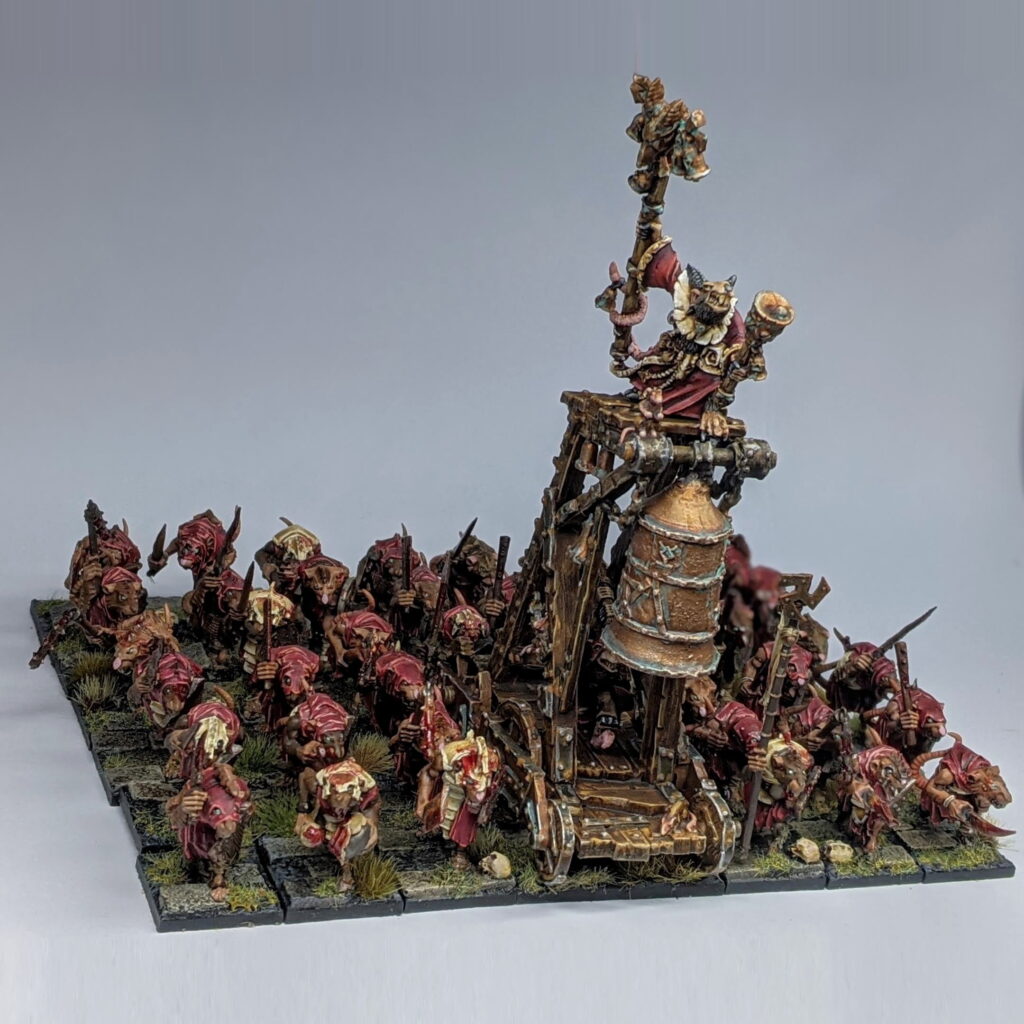
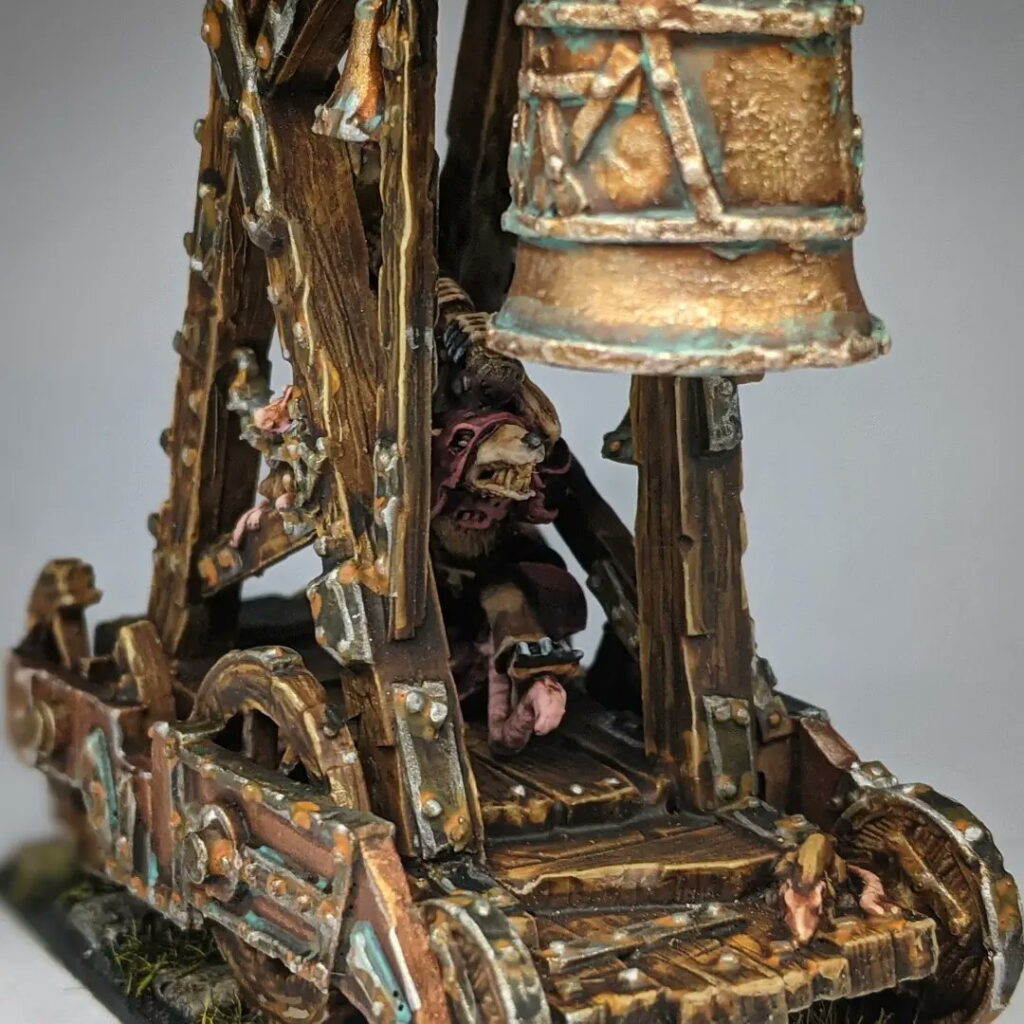
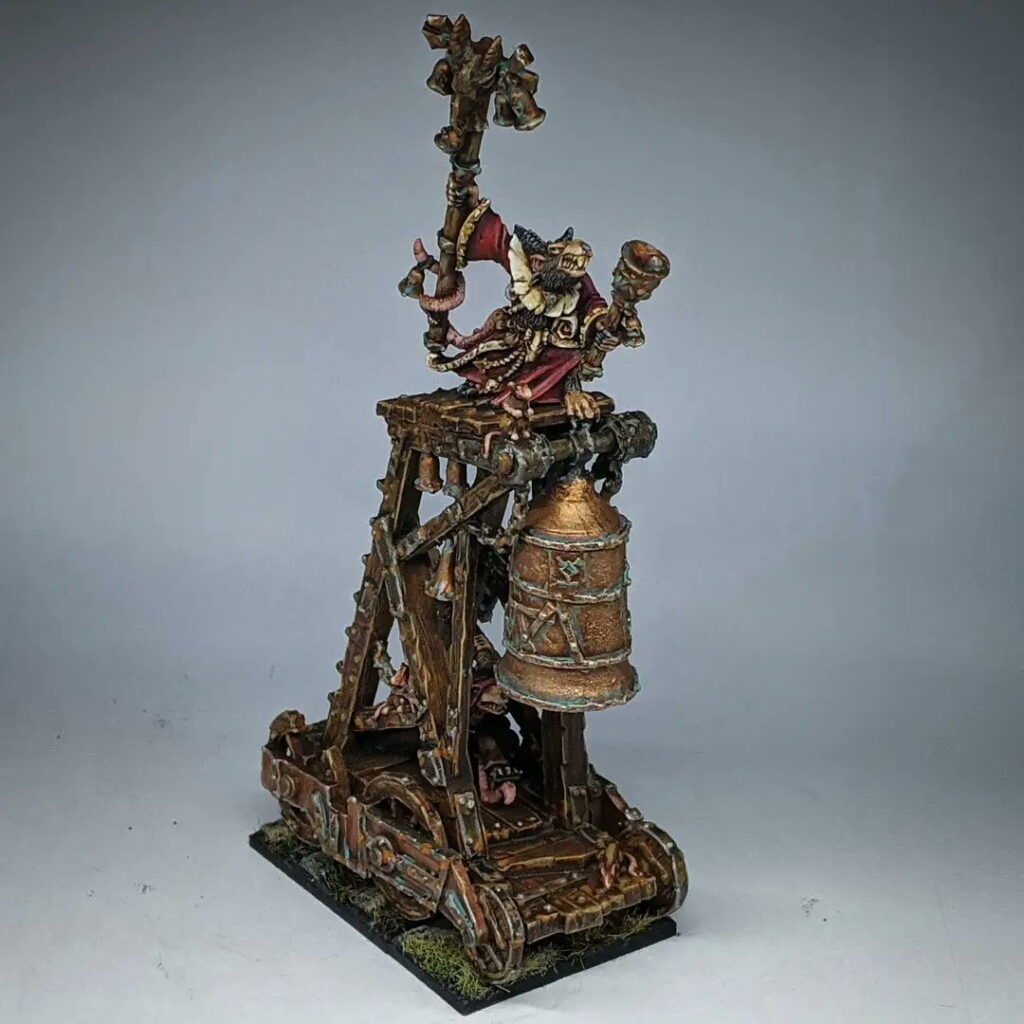
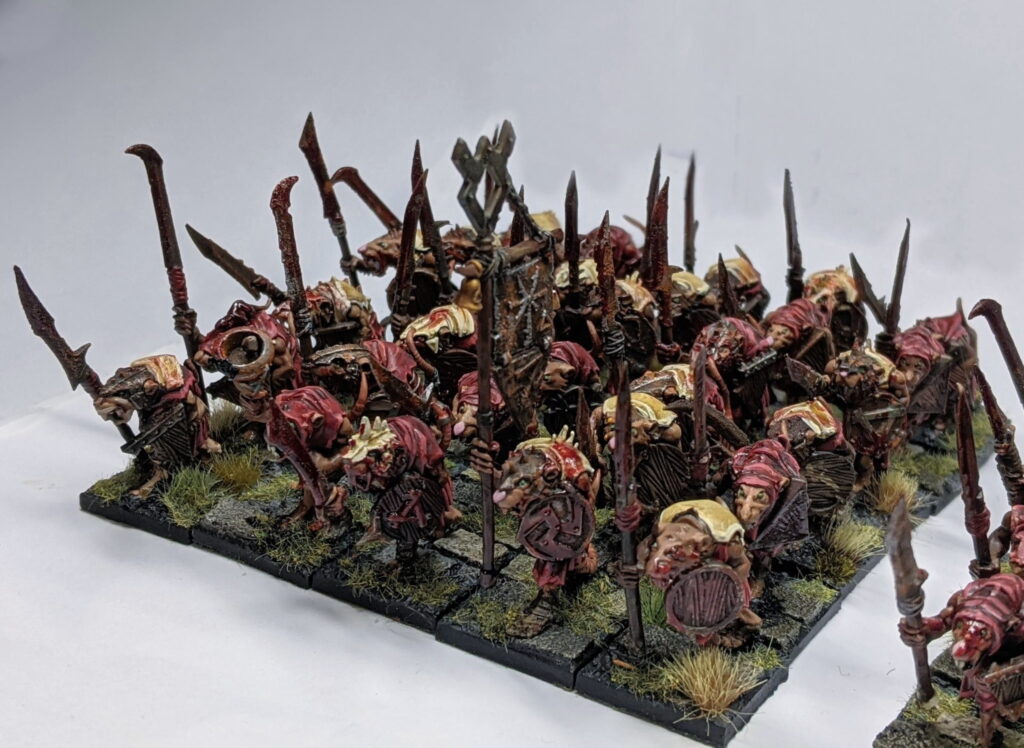
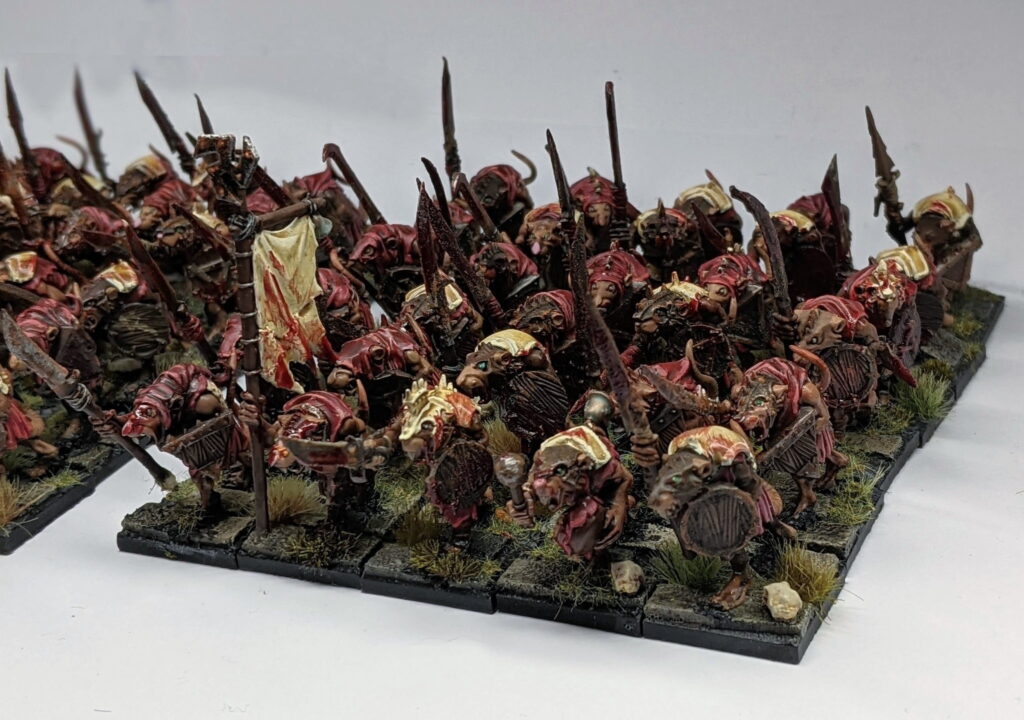
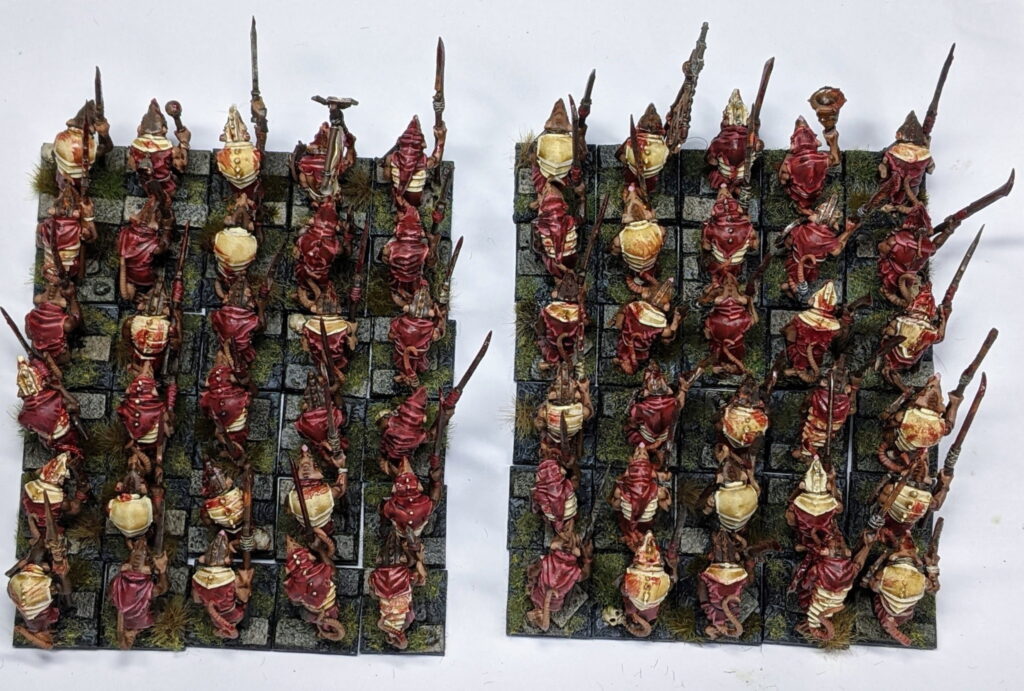
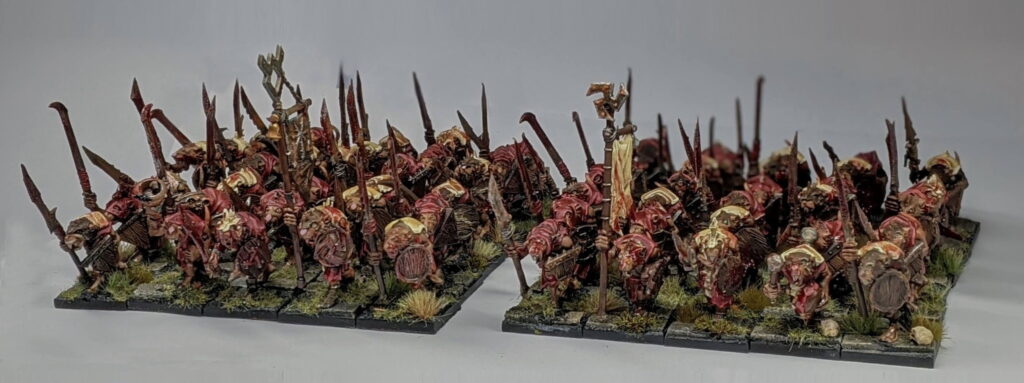
As always, thanks for reading and happy wargaming!
1 The old multipart models were very easy to assemble in such that they only ranked up in a particular order.
2 This process repeated itself several times as I found little to no success with a number of armies including Empire, Chaos, and Dark Elves. Eventually, I gave Dwarfs a shot and finally found my rhythm with the game. I played Dwarfs for a good year or two – even finally winning a few games with them – before I fell away from wargaming in favour of online first person shooters.
3 Bizarrely, still on sale in the GW webstore at the time of posting this. I.. I kind of want to buy a few boxes in case they ever go away, because these are tremendous rank and flank minis.
4 I am, of course, counting Smaug as an army unto himself here.
5 That’s not to say that my Adepta Sororitas, for example, were not a passion project in their own right, but I knew going into that army that it was going to see play on the tabletop.
6 Hence why this post has taken a little longer than usual to get out. I had considered writing this series in multiple instalments, but I really wanted to knuckle down and get through all of the painting as fast as I could. Besides, there are so many staple techniques and colours on this army that I’ve written about in the past that writing about the paint jobs here would feel too much like retreading ground. Except for the Pestillens stuff, of course.
